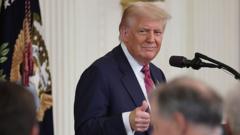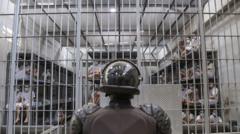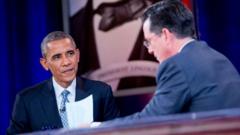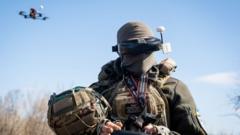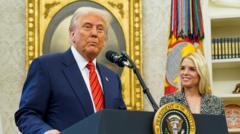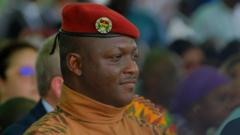The dialogue between Trump and Putin highlighted the complexities of the Ukraine situation, revealing a preference for direct negotiations while addressing issues like prisoner exchanges and military buildups.**
A Diplomatic Dance: Trump and Putin Discuss Ukraine Without Clear Resolutions**

A Diplomatic Dance: Trump and Putin Discuss Ukraine Without Clear Resolutions**
In a recent phone call, President Trump and President Putin exchanged views on the Ukraine conflict, with no substantial agreements reached yet hints of negotiation.**
In a diplomatic conversation between President Donald Trump and President Vladimir Putin, the lack of significant advancements on the Ukraine crisis took center stage on Thursday. Putin, characteristically sticking to his narrative, expressed a readiness to negotiate a peace deal with Ukraine. He reiterated his conditions, emphasizing the necessity to “remove the root causes of this crisis,” which alluded to Russia's demand for extensive control over Ukrainian affairs.
Trump, in a turn of optimistic framing, softened his previously assertive stance on pushing for a cease-fire, indicating a shift towards direct negotiations between Russia and Ukraine—a stance that essentially backed Putin's approach. In accompanying statements, Trump mentioned his discussions with European leaders and Ukraine's president, hinting at a broader dialogue.
Earlier that day, Vice President JD Vance cast doubt on Putin's strategic direction regarding the ongoing war, questioning whether the Russian leader himself has a clear plan to navigate the conflict.
Additionally, the two leaders broached the subject of a potential nine-for-nine prisoner exchange, implying a possible thaw in some aspects of U.S.-Russia relations. Meanwhile, concerns are rising as Russia continues to enhance its military presence near the Finnish border, a development that analysts warn could escalate tensions further in that region.
As these developments unfold, the international community remains watchful, hoping for a concrete resolution to the ongoing conflict, while the call highlighted the complex game of diplomacy that continues to shape the fate of Ukraine.
Trump, in a turn of optimistic framing, softened his previously assertive stance on pushing for a cease-fire, indicating a shift towards direct negotiations between Russia and Ukraine—a stance that essentially backed Putin's approach. In accompanying statements, Trump mentioned his discussions with European leaders and Ukraine's president, hinting at a broader dialogue.
Earlier that day, Vice President JD Vance cast doubt on Putin's strategic direction regarding the ongoing war, questioning whether the Russian leader himself has a clear plan to navigate the conflict.
Additionally, the two leaders broached the subject of a potential nine-for-nine prisoner exchange, implying a possible thaw in some aspects of U.S.-Russia relations. Meanwhile, concerns are rising as Russia continues to enhance its military presence near the Finnish border, a development that analysts warn could escalate tensions further in that region.
As these developments unfold, the international community remains watchful, hoping for a concrete resolution to the ongoing conflict, while the call highlighted the complex game of diplomacy that continues to shape the fate of Ukraine.


